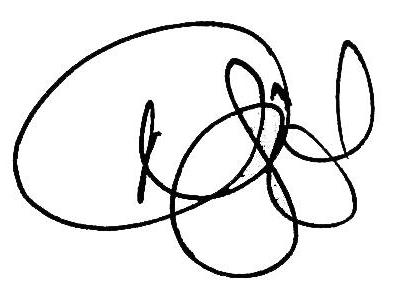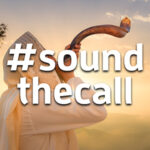Thursday, March 19, 2020 | 23rd Adar 5780
Dear All,
First: my heart goes out to everyone. This is unbearably painful.
People are in hospital. People are losing their lives. People are losing their jobs. People are losing their savings. People are afraid.
And as I wrote last week, Hazon is one of the organizations most directly impacted by this. We are especially exposed because we have had to close Isabella Freedman, our retreat center, for at least two months, and have thus lost all our revenue from the busiest time of the year. We’re reviewing options right now, from a tight place. (We’re writing separately to people to whom we will be returning retreat deposits. Some of you will feel unable to do so, and we will understand that, but to the extent that you are able to donate some or all of your deposits – we would appreciate that enormously.)
I also want to let you know that we have begun gathering community resources for both inside and outside activities at hazon.org/stuckinside. We’re curating there all sorts of things to watch, to read, and to do. Check it out and bookmark it.
But as well as coping with today and tomorrow and next week, I write today to invite you to join together, in a different way, next month.
Please read this and then, if you’re minded to, make a note in your calendar and plan to take action.
The punchline is:
If you have a shofar, a ram’s horn, we’re going to ask you to blow it at noon EDT, on Wednesday, April 22nd. (That’s 9am on the West Coast, and 5pm in London, and 7pm in Israel.) (And if you don’t have a shofar, now’s the time to try to buy one and learn to blow or, between now and then, you’ll figure out some other instrument to blow or bang…)
April 22nd is the 50th anniversary of Earth Day and in honor of this momentous event we invite you to come together, online. (Originally we were going to ask 50 rabbis and leaders to come to Times Square, to blow shofarot together, at noon on Earth Day…) Here’s why:
First: we blow shofar because it’s a ram’s horn. It comes from an animal. You can see that it comes from an animal. It’s a reminder that everything we “have,” everything we depend upon, comes from the natural world. Our food, our soil, the air, the water. We live amidst concrete and metal and plastic and glass – but each of those things is itself from the natural world. It has been too easy, since modernity, to forget this fundamental fact. And with it the concomitant understanding that – this clichéd word, but true – we are stewards of the natural world. And that when we abuse it, animals pay the price, and the oceans do, and so do we. This is what Earth Day comes to remind us of.
Second, we blow the shofar because it is a reminder of ancient wisdom. People have been blowing shofarot – ram’s horns – since the beginning of human civilization. And ancient wisdom is encoded, and passed on, within Jewish tradition, and amidst all the world’s ancient wisdom traditions. We are reaping, right now, some of the consequences of the arrogance of modernity. I don’t reject modernity. If, G!d forbid, something were to happen suddenly to me today I’d want 911 and the best of modern medicine. But the postmodern move, rightly so, is not to reject modernity, but to reach back to the earlier wisdoms that are wiser and differently shaped. Shabbat. Shmita. Kashrut, as the practice of considering whether something is fit for me to eat. Connection. Obligation. And so on.
Third, we blow the shofar at times of celebration. Earth Day is a celebration of this beautiful fragile planet, and all the beautiful fragile living creatures, we amongst them, who live on it, and in it, and over it, and in its waters. Amidst everything, amidst this contemporary plague, it is absolutely right that we blow shofar to celebrate the world.
The fourth reason we blow shofar is because we blow it at a time of alarm. No question about that, this April 22nd. If the epidemiologists are right, by that date New York City may well be at close to the peak of this epidemic. The numbers of people infected and people in hospital and people dying will have shot up, possibly very high indeed. As I write these words, none of us knows if we ourselves will be amongst them – either with the virus and ok, or with the virus and very sick, or with the virus and dead, or on death’s door. So it will indeed be the shofar blast of alarm.
And the fifth and final reason we blow the shofar is to call us to teshuva – to repentance, and to a return to our best selves. This too is both self-evident, and vitally necessary. The shofar that we blow on Rosh Hashanah; the shofar we blow at the very end of Yom Kippur; these call us to action. They call us to change. They are a cry of pain and of fear; they cry out from deep within us, a cry in which we say, please, ok, please let me be better this year. Please let me be my best self. Please let me be kinder, more generous, more honest, more brave.
And right now, it’s a little too soon for us to fully engage with the world after this plague; most of us are simply coping, day-to-day, with a huge range of challenges and change in our lives.
People are focused, and rightly, on social distancing, slowing the path of progression, helping people who are sick, providing extra support to the vulnerable, and (rather too late, but better late than never) taking material steps to strengthen social safety networks for people who lose their jobs or don’t have healthcare or are homeless or sick or old or in any other way, additionally vulnerable.
But – but – this year’s Earth Day, by this weird quirk of fate, is a week before lag b’omer. Why do we celebrate on lag b’omer, why do we build bonfires and drink and have parties? The midrash has it that it was a time of plague. Thousands had died. And lag b’omer was when the deaths began to abate.
I suspect that the number of people infected and ill will continue to rise in the coming weeks, maybe all the way to April 22nd. But, underneath the published numbers, by April 22nd the actual number of new infections will be shrinking. By April 29th we may indeed be through the worst, or close to it. And lag b’omer is a way station on the road to Shavuot, to receiving the Torah, to accepting upon ourselves, each year, new and fresh obligations.
So blowing the shofar – and Earth Day, and Lag b’Omer – will be steps towards the new world, after the plague. We will be moving towards a new brit hazon, a new covenant of vision.
A new commitment to change our behaviors, to live more sustainably and more equitably.
A new commitment to change our institutions, so that in every school, in every synagogue – in every church, every mosque, every gurdwara – in every summer camp, in every place of work, we make a commitment to living more sustainably on this planet central to what we do, not incidental to it.
So. Please put noon, EDT, on April 22nd, in your calendar.
Please email me or Hannah.Henza@hazon.org if you’d like to be involved with this or if you have ideas about how to amplify this. And stay tuned for more information.
Please pass this email on to others – especially to your rabbi, but in fact to everyone – and ask them to put this in their calendar.
Very last thought. Rabbi Jonathan Sacks teaches that until the Jewish people come together to build the mishkan (the focal point of this week’s two Torah portions) they are fragmented, argumentative, negative, and divided. Then the act of working together on building the mishkan helps bring them together. I hope that blowing our shofarot, around the world, at the same moment, will symbolize this in a powerful way.
Shabbat shalom,

Nigel
View our calendar event and Facebook event for more information about #soundthecall.
